10 Best Mountain Bikes

Choosing the right mountain bike can be tough. There are so many options out there. Maybe you’ve spent hours looking at bikes, getting more confused with each review. We get it finding the best mountain bikes isn’t easy when you don’t know what to look for.
Here’s a fact every year, new technology makes bikes lighter, stronger, and riding a bike more fun to ride. Our article is here to guide you through picking your perfect ride from the top 10 best mountain bikes of 2024.
We’ll cover everything from how to choose the best bike that fits your style to comparing the best trail mountain bikes. key features of each model. Get ready for an adventure!
How to Choose the Best Mountain Bike

Choosing the right mountain bike starts with figuring out how you plan to ride. Set your budget next, and then test a few bikes to see what feels best underfoot.
Determine your riding style

Knowing your bike rack options can enhance your mountain biking experience. riding style is crucial for picking the right mountain bike. Different bikes cater to different needs, such as trail mountain bikes for rugged off-road paths and trail bikes are designed to handle tough terrains. cross country bikes for speed and efficiency over long distances.
If you enjoy challenging uphill rides and fast-paced downhill action, consider a bike designed for both durability and speed.
Your choice should align with where you intend to ride.
Hardtail mountain bikes work well if you plan to stick mostly to smoother trails or want a more budget-friendly option. For those aiming for rougher terrain or seeking comfort on longer rides, full-suspension bikes offer better control and shock absorption.
Identifying your riding preferences early helps narrow down the vast selection of top-rated mountain bikes available.
Set a budget

Setting a budget for your mountain bike is crucial when exploring the majority of mountain bike options. You need to know how much money you can spend before you start looking at options for a road bike. Mountain bikes come in a wide range of prices, from affordable beginner bikes to high-quality, top-performing models that can cost as much as a small car.
Deciding on your budget early helps narrow down the choices and focuses your search on bikes within your price range.
Keep in mind, the best budget mountain bikes still offer good performance for their price. These are perfect for beginners or those not ready to invest heavily into their biking gear yet.
On the other end, if you’re serious about mountain biking and want a bike that will keep up with your advanced skills, be prepared to spend more. The key is Finding the right balance is crucial for ensuring that your bike can ride effectively on various terrains. between what you can afford and what features you need in a mountain bike without breaking the bank.
Test ride different bikes
Once you’ve established your budget, the following move is to engage in Trial rides of several women’s mountain bikes.. This exposes you to varying models and their compatibility with your riding style.
Visit nearby bicycle stores or product trials to experiment with different trail mountain bikes, hardtail mountain bikes, and even EMTBs if they pique your interest. Riding diverse bikes helps you identify what fits best for you.
Throughout these trial rides, observe how each bike performs on the trail. Pay heed to the comfort, the simplicity of pedaling, and its function during ascents and descents. Each model will present its own distinguishing features like the type of suspensionThe size of the wheel and material of the frame are crucial factors in determining the bike feel.
Putting them to the test enables you to select a bike that is in line with your budget and also enriches your trail-riding experience.
consider necessary components and features
Choosing the right elements and features is essential for obtaining the optimal mountain bike for your requirements. It’s worth considering the suspension typeThe type of mountain bike you choose significantly impacts ride comfort for trail mountain bikes and cross-country bikes.
Top-tier mountain bikes frequently come with either full suspension or hardtail (front suspension only), contingent on your trail or off-road cycling preferences. The material of the frame is also significant.
Aluminum is a popular choice for constructing the best trail mountain bikes due to its lightweight and durable properties. frames deliver durability at a relatively lower cost, while carbon fiber offers less weight and superior vibration absorption albeit at a steeper price.
The size of the wheel influences the bike’s handling considerably. The standard sizes are 27.5 inches and 29 inches, with the bigger wheels overcoming obstacles more smoothly, albeit possibly making the bike less agile.
Brakes are another crucial component to check; hydraulic disc brakes are essential for the best mountain bikes available right now. offer excellent stopping capability under any conditions. Thinking about gears is also key, particularly if you’ll be traversing diverse terrain where a broad selection of gears can ease navigating steep ascents and speedy descents.
The distinction between a good ride and an exceptional one often hinges on the bike’s components.
Now let’s take a close look at our top 10 mountain bikes of 2024 to identify those that make a mark.
Top 10 Mountain Bikes of 2024
Quick Recommendation
“For a quick recommendation, take a look at our brief product list below or scroll down for more detailed reviews.”
- Elevate Your Ride with Top-Notch Durability and Performance: Trek Fuel EX 9.8
- Upgrade Your Ride with Essential Accessory for Smoother Mountain Trails: Specialized Stumpjumper
- Upgrade Your Ride with Top Performance Durable Gear for the best electric mountain bike.: Santa Cruz Hightower
- Enhance Your Ride with Peak Performance and Style: Yeti SB130
- Elevate Your Ride with Precision and Durability on the Trail: Giant Trance Advanced Pro 29
- Elevate Your Adventure with Top Performance in Rough Terrain: Ibis Ripmo
- Best for Keeping Your Adventure Bike Vibrantly Colored and Durable: Canyon Spectral
- Elevate Your Ride with Top-Tier Shifting and Craftsmanship: Pivot Mach 4 Carbon
- Ideal for Trail Enthusiasts Seeking Performance and Durability: Cannondale Habit Carbon 3
- Ideal for Avid Cyclists Seeking Stylish, Performance-Enhancing Upgrades: Norco Sight
Comparison Table
| Bike Model | Price (USD) | Material | Manufacturer | Customer Rating |
|---|---|---|---|---|
| Trek Fuel EX 9.8 | $5,999 | Carbon (OCLV Mountain) | Trek | 4.5/5 |
| Specialized Stumpjumper | $5,800 | Carbon | Specialized | 4.7/5 |
| Santa Cruz Hightower | $6,499 | Carbon | Santa Cruz | 4.6/5 |
| Yeti SB130 | $6,200 | Carbon | Yeti | 4.8/5 |
| Giant Trance Advanced Pro 29 | $5,100 | Carbon | Giant | 4.6/5 |
| Ibis Ripmo | $6,099 | Carbon | Ibis | 4.7/5 |
| Canyon Spectral | $3,699 | Carbon | Canyon | 4.5/5 |
| Pivot Mach 4 Carbon | $8,999 | Carbon | Pivot | 4.7/5 |
| Cannondale Habit Carbon 3 | $4,300 | Carbon | Cannondale | 4.5/5 |
| Norco Sight | $6,699 | Carbon | Norco | 4.6/5 |
1. Trek Fuel EX 9.8
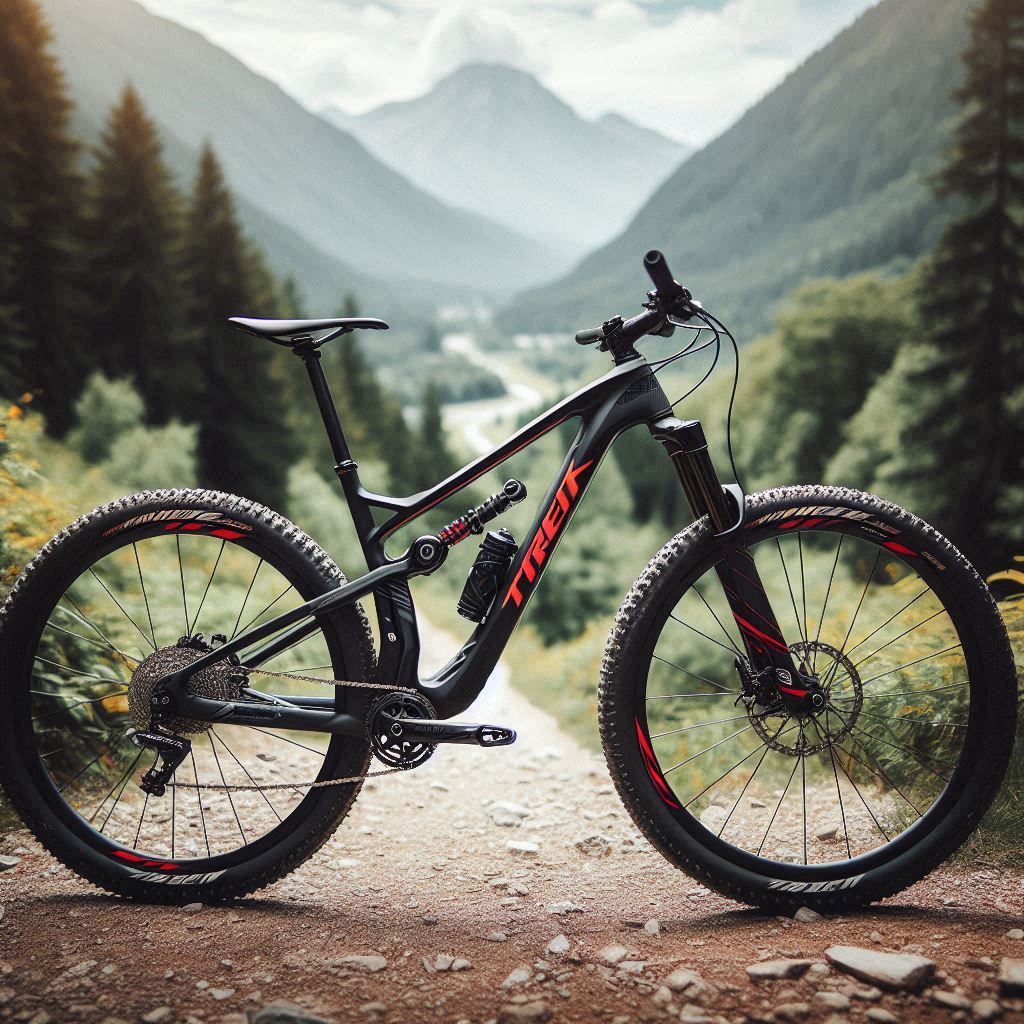
The Trek Fuel EX 9.8 is designed for riders who want a bike that can handle all kinds of terrain, from fast downhills to technical climbs. Built with a lightweight carbon frame, it strikes a balance between durability and performance.
The 29-inch bike is made for stability and speed. wheels offer improved rollover capabilities, while the active suspension system keeps you in control, regardless of the conditions.
Features
- Frame design is crucial for performance, especially in a bike that employs advanced materials and geometry.: Carbon
- Suspension is a critical component of any bike that employs advanced technology for improved performance.: 140mm front, 130mm rear
- Drivetrain options are crucial for mountain bikers seeking a new bike that meets their performance needs.: Shimano XT
- Wheels: 29-inch bike is made for smooth rides over rough terrain.
- Other mountain bikers often visit their local bike shop for advice on the best trail bike.: Fox Performance 36 fork, ABP braking system
Pros and Cons
| Pros | Cons |
|---|---|
| Agile handling and suspension performance | Expensive |
| Great for both climbing and descending | Suspension setup can feel firm |
| Knock Block prevents frame damage | Requires regular maintenance |
The Trek Fuel EX 9.8 stands out as one of the most versatile trail bikes on the market. Whether you’re tackling steep descents or climbing switchbacks, this bike can handle it all with ease. The lightweight carbon frame enhances your speed and efficiency, while the 29-inch wheels provide great rollover capabilities, making it easier to handle rocky or uneven terrain.
The Active Braking Pivot (ABP) system ensures consistent control when you’re braking, even on rough trails. The bike’s suspension setup—140mm at the front and 130mm at the rear—offers enough travel for aggressive riding, though some riders may find the rear suspension a bit firm for their taste.
Trek’s Knock Block headset is a clever addition that protects the frame from damage during a crash or from over-rotating the handlebars.
The Fuel EX 9.8 excels in both uphill and downhill scenarios, making it a fantastic all-rounder. However, it comes at a higher price point, and its maintenance demands might be too high for casual riders.
2. Specialized Stumpjumper
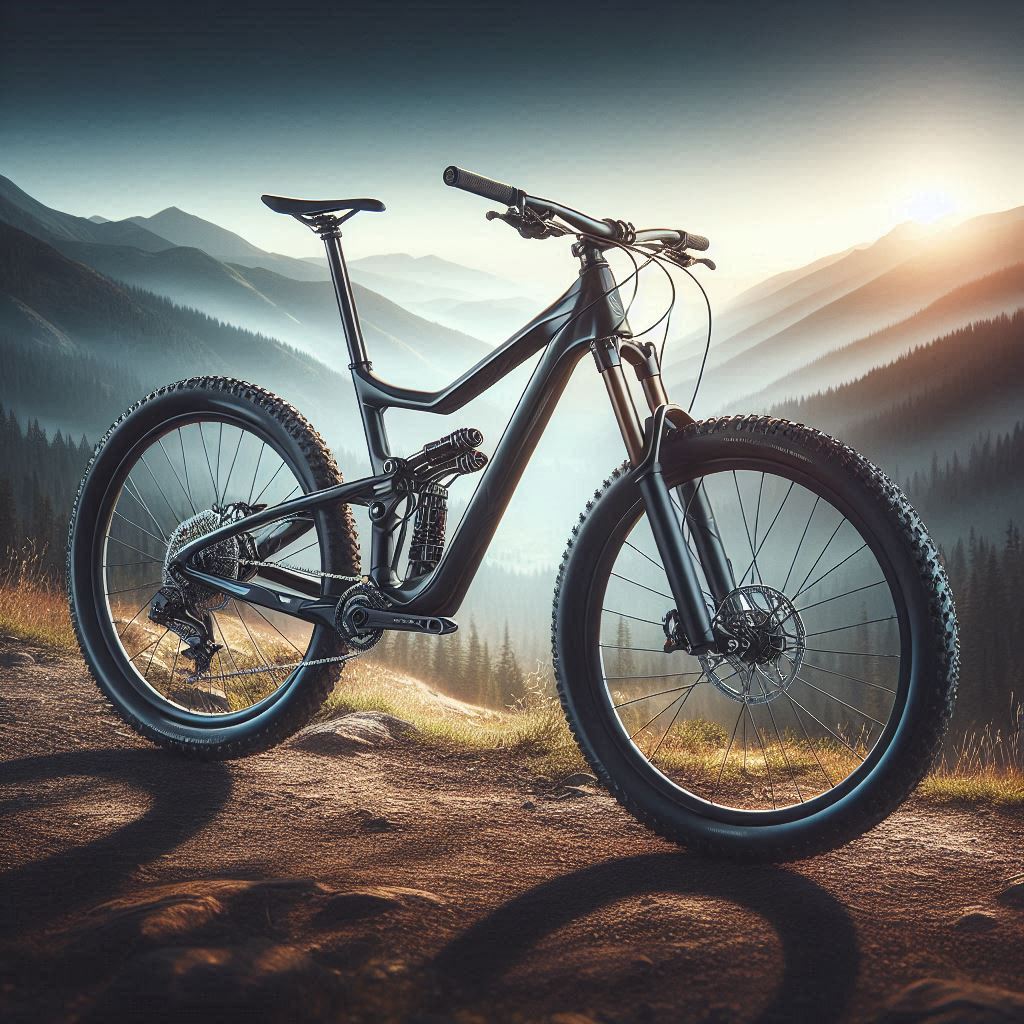
The Specialized Stumpjumper is a legendary trail bike known for its balanced geometry and ability to tackle a wide range of terrains. It’s lightweight yet sturdy, making it a great choice for both climbing and descending, just like the new trail bike. The adjustable geometry and internal storage options are some of the standout features that differentiate the Stumpjumper from other bikes.
Features
- Frame: Full carbon
- Suspension: 140mm front and rear
- Drivetrain: SRAM Eagle is a component that many riders want the best for their setups.
- Wheels: 29-inch
- Other: SWAT door storage, adjustable geometry with flip chip
Pros and Cons
| Pros | Cons |
|---|---|
| Lightweight and well-balanced | The rear suspension feels less plush than what you would expect from the best hitch racks. |
| Adjustable geometry via flip chip | Higher price point for some models |
| Great downhill stability | Less efficient for long climbs |
The Specialized Stumpjumper has earned its reputation as a versatile and well-rounded trail bike. With 140mm of travel at both the front and rear, the bike is capable of handling both technical climbs and fast descents.
The carbon frame is not only lightweight but also incredibly strong, which helps the bike feel nimble yet sturdy on the trail.
A standout feature of the Stumpjumper is its SWAT storage system, which allows you to store tools and gear inside the bike’s downtube—a highly practical feature for those long days out on the trail.
Additionally, the flip chip enables riders to adjust the bike’s geometry based on terrain preference, offering a more aggressive or relaxed riding position depending on the conditions.
On the downside, some riders report that the rear suspension can feel less plush on very rough descents, which may make it less ideal for extreme downhill riding. Additionally, while the bike performs well on most climbs, it’s not the most efficient climber for extended uphill rides.
However, if you’re looking for a highly capable and adaptable trail bike, the Stumpjumper is a great choice, albeit at a higher price point.electric bikes as well. Make your next ride unforgettable by equipping your bike with this top-notch accessory today.
3. Santa Cruz Hightower
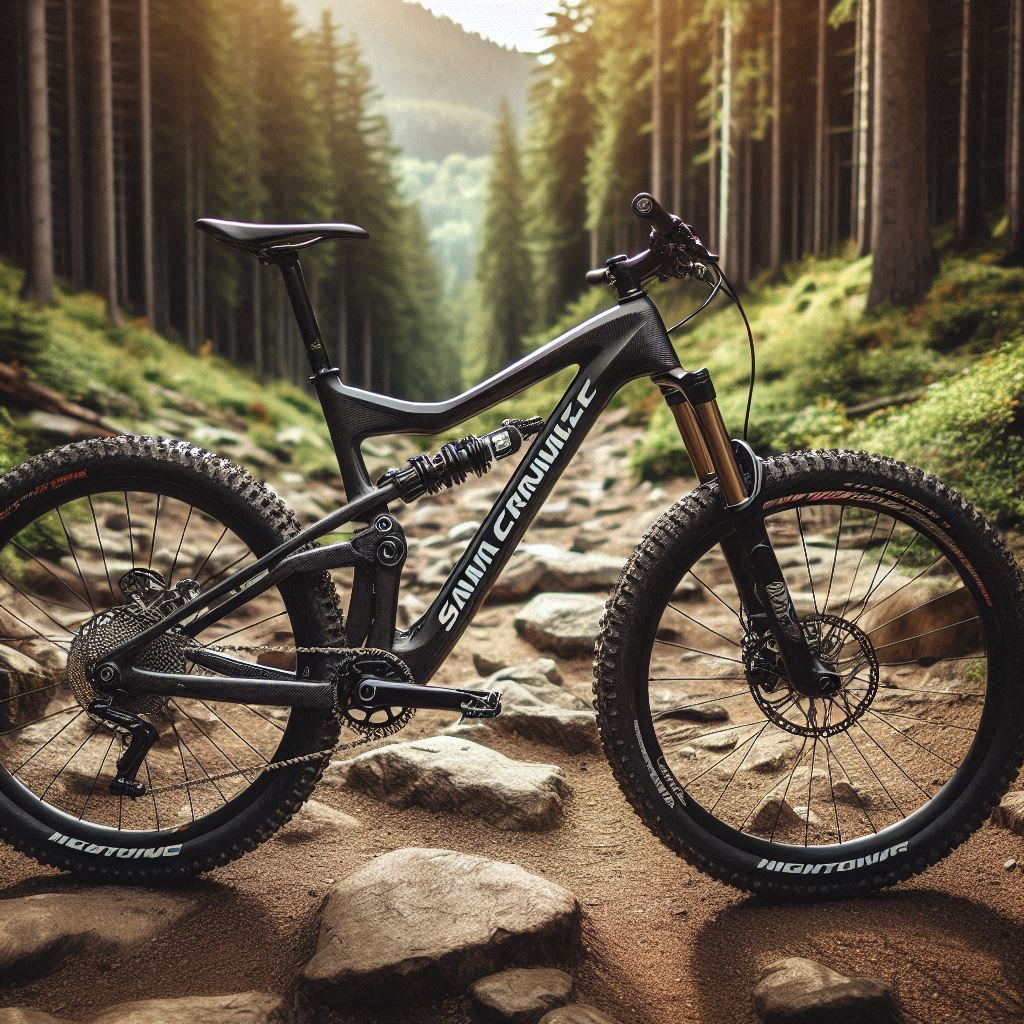
Santa Cruz Hightower
The Santa Cruz Hightower is a trail-focused bike that is built for both climbing and descending with ease, showcasing how a bike is made for versatility. It comes with a strong carbon frame and a well-designed suspension system that ensures efficient pedaling without sacrificing comfort on technical descents.
The bike is available in both the lighter CC carbon and the more affordable C carbon frame options.
Features
- Frame: Carbon C or CC
- Suspension: 150mm front, 145mm rear
- Drivetrain: SRAM GX Eagle
- Wheels: 29-inch
- Other: VPP suspension, adjustable flip chip
Pros and Cons:
| Pros | Cons |
|---|---|
| Great balance between climbing and descending | Price is high |
| VPP suspension provides efficient pedaling | Not ideal for very technical descents |
| Adjustable geometry | Heavier than some competitors |
The Santa Cruz Hightower is a go-to bike for riders who demand versatility. With its 150mm front and 145mm rear travel, it handles both climbs and descents with equal finesse. The VPP (Virtual Pivot Point) suspension design helps maintain efficient pedaling while also absorbing bumps and obstacles during descents, giving it a balanced feel.
The adjustable flip chip allows riders to tweak the geometry for more aggressive downhill riding or for a more neutral, all-mountain setup. The 29-inch wheels further enhance its capability on rocky and root-laden trails by providing better rolling momentum.
However, the Hightower is priced at the higher end of the spectrum, and it’s slightly heavier than some of its competitors. It may not be the best choice for extreme downhill riders who need more suspension travel.
Nevertheless, if you’re looking for a bike that offers both comfort and performance in a variety of trail conditions, the Hightower is a solid investment.bikes.
4. Yeti SB130

The Yeti SB130 is a trail bike that’s built to excel in both climbing and descending. Designed with Yeti’s signature Switch Infinity suspension, the SB130 offers smooth travel that feels bottomless while maintaining excellent pedaling efficiency. It’s a favorite among trail and all-mountain riders looking for a lightweight yet durable machine.
Features:
- Frame: TURQ carbon
- Suspension: 150mm front, 130mm rear
- Drivetrain: SRAM X01 Eagle
- Wheels: 29-inch
- Other: Fox Factory 36 fork and Switch Infinity suspension system provide exceptional control on various bike rides.
Pros and Cons
| Pros | Cons |
|---|---|
| Excellent pedaling efficiency | High cost |
| Smooth descending and climbing | Limited rear travel for some terrains |
| Lightweight and durable TURQ carbon frame | Rear suspension setup is sensitive, offering better control and shock absorption, essential for a trail bike of the year. |
The Yeti SB130 This bike is a powerhouse of a trail bike, known for its impressive performance across a variety of terrains, making it a contender for the best trail bike of the year. The Switch Infinity suspension system sets it apart from competitors by providing a seamless transition between climbing and descending.
The suspension feels like it has more travel than it actually does, making it an excellent choice for riders who want to go fast downhill while still having a capable climber.
The TURQ carbon frame ensures that the bike is both lightweight and durable, providing a smooth ride even on rough trails. The SB130’s design is a testament to the evolution of bikes over the years in the mountain bike industry. Fox Factory 36 fork adds an extra layer of suspension performance, giving riders the confidence to tackle technical descents.
While the rear suspension travel (130mm) is more than adequate for most trails, it may feel limited on extremely rough or technical terrain. Additionally, the bike comes with a premium price tag, which may be a barrier for some riders. Overall, the SB130 is an excellent option for those who want a high-performance trail bike that can handle a wide range of conditions.shifting and stylish flair on any of the 10 best mountain bikes.
Gear up today and transform your biking experience!
5. Giant Trance Advanced Pro 29
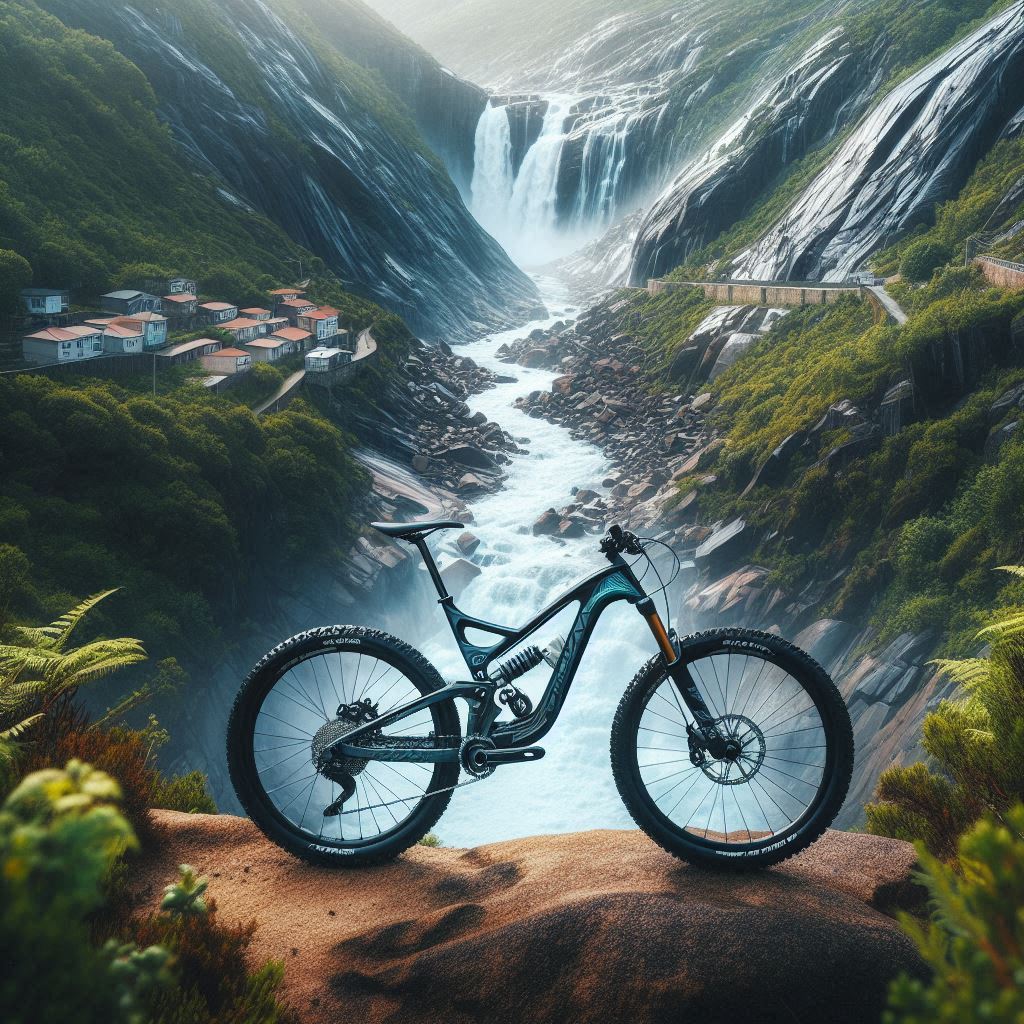
The Giant Trance Advanced Pro 29 is a lightweight trail bike designed to provide excellent climbing performance without compromising on descending capabilities. The bike’s Maestro suspension is renowned in the mountain bike industry for its efficiency and smooth performance.
ensures smooth handling over various types of terrain, while its full carbon frame keeps the weight down, making it a nimble choice for technical climbs.
Features
- Frame: Full carbon
- Suspension: 130mm front, 115mm rear
- Drivetrain: SRAM GX Eagle
- Wheels: 29-inch
- Other: Tubeless-ready, adjustable geometry
Pros and Cons
| Pros | Cons |
|---|---|
| Lightweight frame with excellent climbing | Rear suspension travel may feel limited |
| Maestro suspension is highly efficient, making it a top pick for enduro bike enthusiasts. | Requires more setup time for ideal suspension |
| Tubeless-ready wheels | Stiffer feel on rougher descents |
The Giant Trance Advanced Pro 29 is a bike that prioritizes efficiency and agility, making it an excellent choice for riders who love long climbs and technical trails.
Its Maestro suspension system provides a balanced feel, allowing the bike to handle a wide range of conditions. The carbon frame adds to its lightweight feel, making it particularly effective on uphill rides.
One of the standout features is the flip chip, which allows you to adjust the geometry for different types of terrain. This gives you the flexibility to make the bike more aggressive for downhill riding or more stable for climbing. The bike is also tubeless-ready, which reduces the risk of punctures on rough trails.
However, the rear suspension travel is somewhat limited (115mm), which can be noticeable on rough descents. Additionally, the setup process for getting the suspension dialed in can take some time. Despite these minor drawbacks, the Trance Advanced Pro 29 is a solid option for riders who prioritize climbing performance but still want a capable descender.make this upgrade.
6. Ibis Ripmo
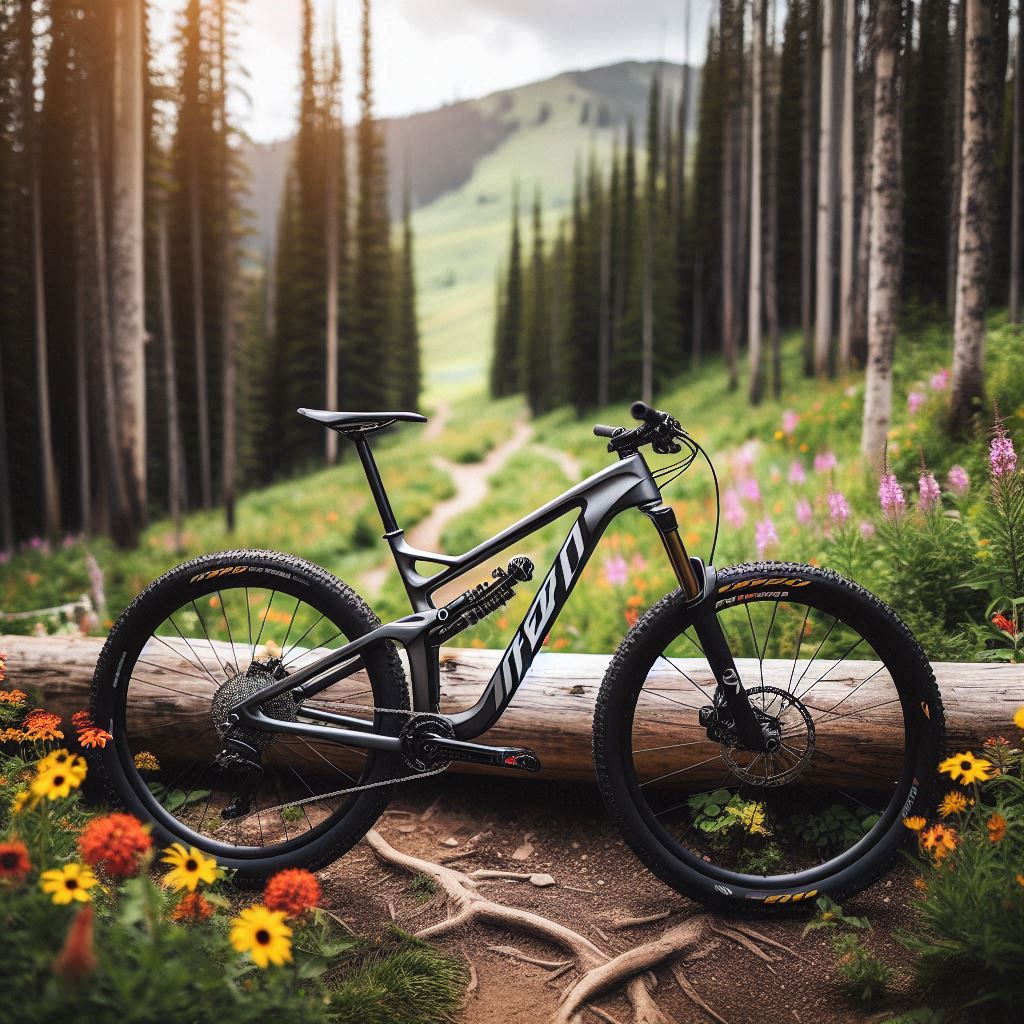
The Ibis Ripmo is a long-travel 29er designed for aggressive trail riding. With its balanced geometry and efficient DW-Link suspension system, the Ripmo combines the best attributes of enduro and trail bikes. It’s ideal for riders who want a bike that can handle technical descents and still climb efficiently.
Features
- Frame: Carbon
- Suspension: 160mm front, 147mm rear, suitable for an enduro bike setup.
- Drivetrain: Shimano XT or SRAM Eagle
- Wheels: 29-inch
- Other: DW-Link suspension, Fox Float 36 fork
Pros and Cons
| Pros | Cons |
|---|---|
| Excellent on both climbs and descents | Heavier than some competitors |
| DW-Link suspension offers great traction | Pricey |
| Long travel for aggressive trails | Might be overkill for casual riders |
The Ibis Ripmo is a favorite among aggressive trail riders and enduro enthusiasts due to its long travel and efficient suspension. The DW-Link suspension system stands out, providing excellent traction while maintaining efficient pedaling, even on steep climbs.
The combination of 160mm front and 147mm rear travel makes this bike capable of tackling rough descents while still being nimble enough for technical climbs.
The bike’s Fox Float 36 fork ensures excellent front-end stability, while the overall geometry promotes confidence in tricky, technical situations. The Ripmo’s 29-inch wheels also offer better momentum and rollover ability, making it ideal for rough trails.
However, the Ripmo is heavier than some of its competitors, and while it’s great for aggressive riders, it may be overkill for those who prefer casual trail riding.
Its price point is also on the higher end, making it a significant investment. Still, for those seeking an all-rounder with a focus on gnarly trails and technical descents, the Ibis Ripmo is a top contender.
7. Canyon Spectral
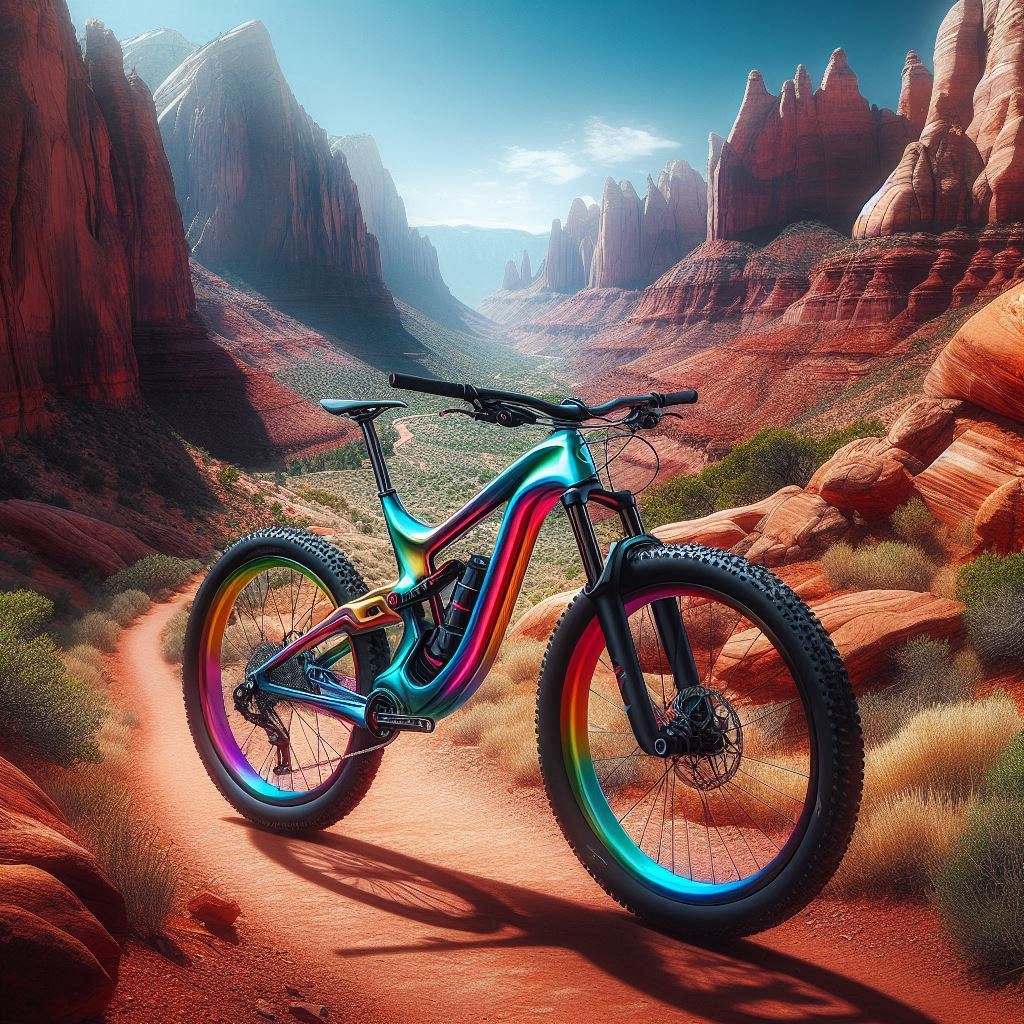
The Canyon Spectral is a versatile all-mountain bike that balances playful geometry with serious descending capabilities. Designed for a mix of enduro and trail riding, the Spectral provides stability and confidence for descending, while still being light and nimble enough for climbing.
Features
- Frame: Full carbon
- Suspension: 150mm front, 140mm rear
- Drivetrain: Shimano SLX/XT
- Wheels: 27.5-inch or 29-inch
- Other: Triple-phase suspension, internal cable routing
Pros and Cons
| Pros | Cons |
|---|---|
| Playful and agile geometry | Rear suspension might feel limited for some |
| Great value for a carbon bike | Slightly less efficient for long climbs |
| Impressive descending capabilities | 27.5-inch wheels may not suit all riders |
The Canyon Spectral is known for its versatility, making it an excellent choice for riders who want to handle everything from fast descents to technical climbs. Its Triple-phase suspension technology is becoming more common in the mountain bike industry, making it a popular choice among riders.
system ensures that the bike feels smooth and responsive, especially on aggressive trails. The Spectral’s geometry leans towards the playful side, making it a fun ride for both experienced riders and those looking to push their limits.
The bike comes in both 27.5-inch and 29-inch wheel options, giving riders the flexibility to choose based on their riding style. The 150mm front and 140mm rear suspension is ample for most trail conditions, providing stability during descents and offering good rollover ability on rocky terrain.
However, while the Spectral performs well on descents, it may feel less efficient on long, sustained climbs compared to bikes with more refined suspension systems. The rear travel might also feel limited to riders looking for more cushion on extreme terrain.
Nevertheless, the Canyon Spectral offers excellent value for a full carbon bike, making it a solid choice for all-mountain riders.with its matching Hyundai TR Canyon Red spray paint ensures your ride stands out on any trail.
Grab this durable, easy-to-apply solution and keep your bike looking as vibrant as your adventures among the 10 best mountain bikes.
8. Pivot Mach 4 Carbon

The Pivot Mach 4 The xc race bike is a high-performance cross-country bike with a focus on speed and agility. Designed for XC racers and trail riders who prioritize efficiency, the Mach 4 delivers quick acceleration and precise handling. It’s built with lightweight carbon and features a progressive geometry to enhance climbing and descending performance.
Features
- Frame: Full carbon
- Suspension: 120mm front, 115mm rear
- Drivetrain: Shimano XT/XTR or SRAM Eagle
- Wheels: 29-inch
- Other: DW-Link suspension, Fox 34 fork
Pros and Cons
| Pros | Cons |
|---|---|
| Fast and agile, ideal for XC racing | Limited suspension travel |
| Lightweight frame for quick acceleration | Expensive |
| DW-Link suspension is efficient | Not ideal for aggressive descending |
The Pivot Mach 4 is an excellent option for riders who prioritize speed and efficiency. Designed with a focus on cross-country riding, the bike’s 120mm front and 115mm rear travel Short travel bikes are perfect for fast, technical terrain.
The DW-Link suspension system ensures efficient pedaling, even on steep climbs, while the 29-inch wheels provide better momentum and stability on descents.
The Fox 34 fork offers enough front-end suspension to handle moderate technical descents, but aggressive downhill riders may find the suspension travel too limited for rougher trails.
The lightweight carbon frame also contributes to the bike’s excellent climbing abilities, making it a top choice for competitive riders who want to gain speed without sacrificing control.
Despite its agility, the Pivot Mach 4’s price point is on the higher side, and its limited travel may not be suitable for riders looking for more cushion on descents. Still, for cross-country and trail enthusiasts, the Mach 4 delivers exceptional performance in a sleek, lightweight package that is also a bike for serious riders.
9. Cannondale Habit Carbon 3
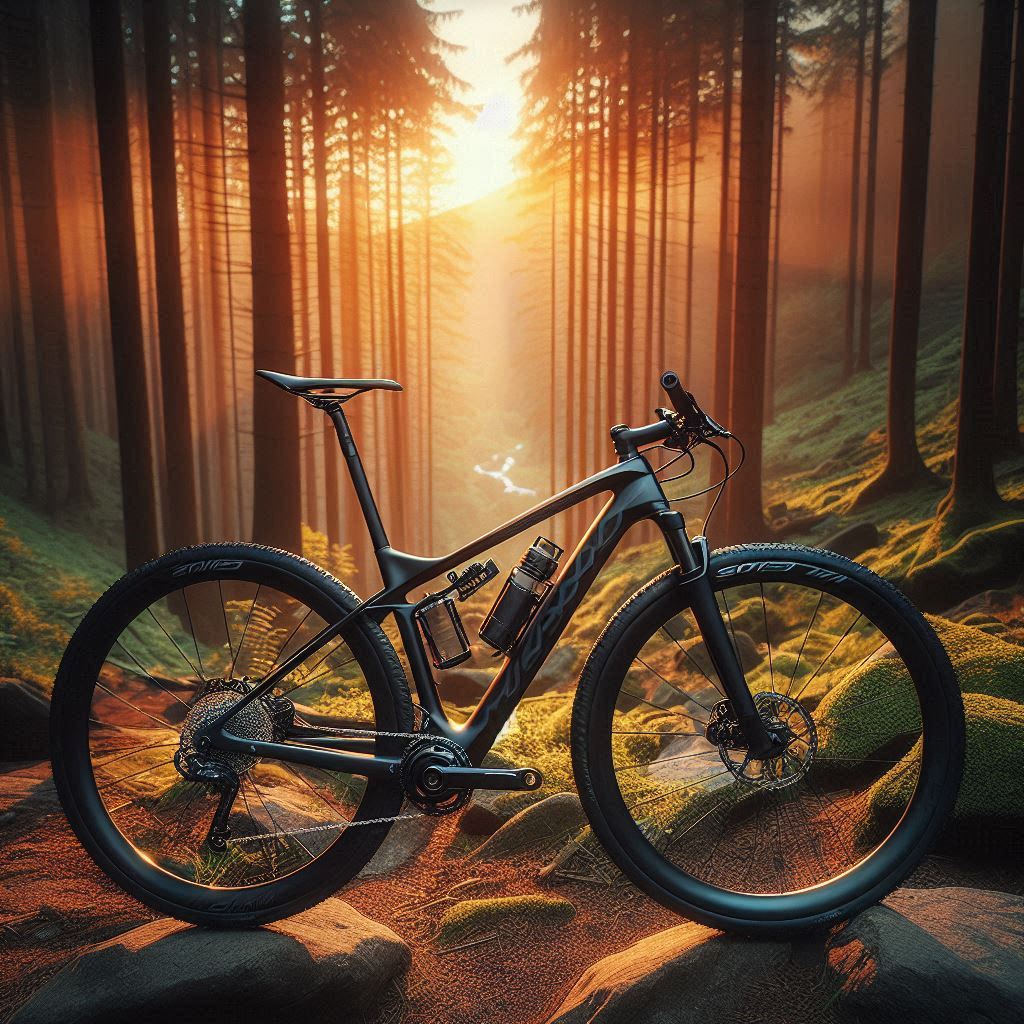
The Cannondale Habit Carbon 3 is a well-rounded trail bike built to handle a wide range of terrain, making it a great choice for electric bikes as well. It features Cannondale’s signature technology, making it a top pick for anyone looking to upgrade their bike.
Proportional Response suspension, ensuring that each frame size offers an optimized suspension setup for different rider heights. With balanced geometry and versatile suspension travel, the Habit Carbon 3 is great for both trail riding and enduro-style descents.
Features
- Frame: Carbon
- Suspension: 140mm front, 130mm rear
- Drivetrain: Shimano SLX/XT
- Wheels: 29-inch
- Other: Proportional Response suspension, Fox Float Rhythm 34 fork
Pros and Cons
| Pros | Cons |
|---|---|
| Proportional suspension tailored to frame size | On the heavier side for a trail bike |
| Balanced geometry for all-around performance | Not as nimble as shorter-travel bikes |
| 29-inch wheels for better rollover | May feel bulky on tight trails |
The Cannondale Habit Carbon 3 strikes a great balance between trail and enduro riding, thanks to its Proportional Response suspension system. This system ensures that every rider, regardless of height, gets a bike with an optimized suspension setup tailored to their frame size.
The bike’s 140mm front and 130mm rear travel provide enough cushion for rough descents while still feeling efficient on climbs.
The Fox Float Rhythm 34 fork and Shimano SLX/XT drivetrain give the bike precise handling and smooth shifting, making it a reliable option for trail riders. Its 29-inch wheels enhance its rollover ability, allowing riders to glide over obstacles with ease.
However, the Habit Carbon 3 is slightly heavier than some of its competitors, and its bulk can make it feel less nimble on tight, technical trails. But for riders looking for a capable all-rounder that excels in both climbing and descending, the Habit Carbon 3 is a bike that employs innovative suspension technology.your match today.
10. Norco Sight
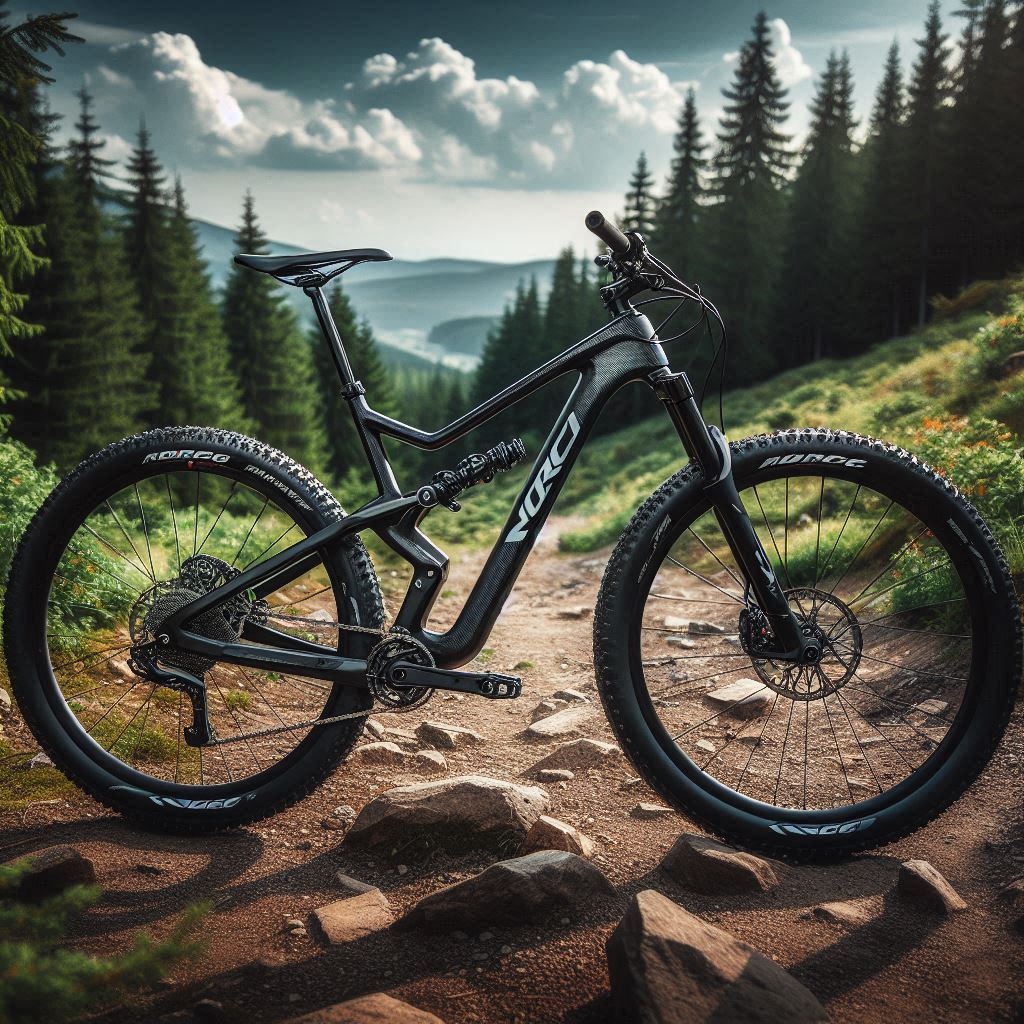
The Norco Sight is an aggressive all-mountain bike built for riders who want to push the limits on technical terrain. It features a strong carbon frame and an aggressive geometry designed for steep descents and challenging climbs. The Sight is available in both 29-inch and 27.5-inch wheel options, offering versatility depending on your riding style.
Features
- Frame: Carbon
- Suspension: 160mm front, 150mm rear
- Drivetrain: Shimano XT or SRAM GX Eagle
- Wheels: 27.5-inch or 29-inch
- Other: Adjustable geometry, Fox 38 Performance fork
Pros and Cons
| Pros | Cons |
|---|---|
| Aggressive geometry for technical riding | Heavier than some competitors |
| Excellent suspension for rough descents is essential for mountain bikers tackling challenging trails. | Pricey |
| Adjustable geometry for customized handling | May be overkill for casual riders |
The Norco Sight is built for aggressive trail and enduro riders who like to charge down steep, technical terrain. Its 160mm front and 150mm rear travel make it one of the most capable bikes in the all-mountain category.
The Fox 38 Performance fork and adjustable geometry allow riders to fine-tune the bike to suit their preferred riding style, whether for downhill stability or uphill efficiency.
The bike comes in both 27.5-inch and 29-inch wheel options, giving riders the flexibility to choose based on the type of terrain they typically ride. The Shimano XT or SRAM GX Eagle drivetrain ensures smooth shifting, while the carbon frame keeps the bike stiff and responsive.
However, the Norco Sight is on the heavier side, which can make long climbs feel more laborious, especially compared to other bikes over the years. It’s also one of the pricier bikes in this category, but for serious riders who prioritize downhill performance, the Sight’s capabilities justify the cost.
It’s an ideal choice for riders who like to tackle the most demanding trails.Pilo D815 Derailleur Hanger.
Key Features and Benefits of Each Bike

Exploring the key features and benefits of each bike reveals how they stand out in performance and comfort, especially in mountain bike reviews. From suspension systems that smooth out rough trails to lightweight frames for agile handling, every detail enhances your ride.
Suspension type and travel
Suspension type and travel are critical for mountain bikes. They determine how well a bike can handle rough terrain. Full suspension bikes offer shock absorption at both the front and rear, making rides smoother on tough trails.
Hardtail bikes are designed for riders who prefer a lightweight and efficient bike feel on trails. have suspension only in the front, providing better control and power transfer when climbing.
A good suspension system turns rocky paths into smooth rides.
Mountain bikes are designed with varying levels of suspension travel, measured in millimeters. Shorter travel is great for cross country bikes where efficiency is key. Longer travel suits downhill or enduro riders who face steep descents and big drops.
The Trek Fuel EX 9.8, for instance, has a balanced 130mm travel suitable for diverse trails, while the Giant Trance Advanced Pro 29 offers an aggressive 150mm for challenging terrains.
Frame material and construction
After discussing suspension types and how they affect your ride, it’s crucial to talk about the kind of mountain bike that suits your needs. frame material and construction. Mountain bikes come with frames made from various materials, each offering its unique benefits.
Aluminum is the most common due to its balance between strength and weight. It makes for a rugged yet lightweight bike that can handle rough trails without weighing you down.
Carbon fiber, though more expensive, offers an even lighter option with added durability. This material absorbs trail vibrations better, providing a smoother ride on uneven terrains.
Some high-end mountain bikes combine these materials to achieve the best of both worlds – lightness for climbing hills and strength for descending rugged slopes. By choosing the right frame material, riders can significantly enhance their mountain biking experience.
Wheel size
Wheel size greatly affects how a mountain bike performs on different trails. Bikes with 26-inch wheels Mid-travel trail bikes are becoming less common, but they offer quick handling. The 27.5-inch wheels strike a balance between agility and speed, making them popular among trail riders.
For those looking to roll over obstacles more easily and gain speed faster, 29-inch wheels are the go-to choice. Riders must consider their terrain and riding style before choosing the right wheel size.
Each wheel size comes with its pros and cons. Smaller wheels accelerate faster due to their lower weight, which is great for twisty trails where nimbleness matters most. On the other hand, larger wheels provide better stability and traction, suited for rough terrains where control at high speeds is crucial.
Picking the correct wheel size can make all the difference in matching a bike’s performance to a rider’s needs and preferences on mountain biking adventures, especially for test bikes.
Brakes
Mountain bikes come with two main types of brakes: disc and rim. Disc brakes offer more consistent performance in different conditions, including wet and muddy trails. They require less force to apply, making them easier for riders to control their speed precisely.
Rim brakes are found on less expensive models but tend to wear out quicker and perform poorly in wet conditions.
Disc brakes have changed the game for mountain biking, offering superior control.
Brakes are a critical safety feature on any mountain bike. It’s essential for cyclists to check them before every ride. Upgrading your bike’s braking system can improve both performance and safety, especially if you frequently tackle challenging terrains or long descents where good braking power is vital on a fat bike.
Gears
Gears play a crucial role in mountain biking, allowing riders to adjust their effort based on the terrain. The right gear can make climbing hills easier or help maintain speed on flat ground.
Most top-rated mountain bikes come with a wide range of gears. This variety lets bikers tackle different trails more effectively.
Choosing a bike with quality gears is essential for both beginner and experienced cyclists. It improves ride comfort and enhances performance on various off-road cycling adventures.
High-quality gears also require less maintenance, making them ideal for long-term use in trail riding and outdoor adventure activities.
Comparison of the Best Mountain Bikes

Comparing the best mountain bikes reveals differences in price and components. Reviews from users offer insights into each bike’s performance and reliability.
Price range
Prices for the top-rated mountain bikes vary widely. Beginner models often start around $500. On the other hand, high-quality mountain bikes designed for more experienced riders can easily exceed $10,000.
This broad range of options includes the best electric mountain bike available today. price range ensures options are available for cycling enthusiasts of all levels and budgets. Factors like frame material, The suspension quality significantly affects the bike feel and overall performance on rough trails., and special features play a big role in these costs.
Moving on to weight considerations helps narrow down choices based on personal preference and riding style.
Weight
After discussing the budget, it’s crucial to take into account the weight of a mountain bike. A more lightweight bike typically gives superior results, particularly when ascending hills or managing challenging trails.
Most top-tier trail and cross-country bikes strive for minimal weight without losing resilience, producing quality bikes for avid riders. Take for instance, the Carbon frames are often the pick for the best performance in professional bikes. of superior mountain bikes like the Specialized Stumpjumper and Trek Fuel EX 9.8 substantially decrease the total weight.
The variance in kilograms or pounds can significantly affect your riding experience and stamina on lengthy rides. Bikes such as the Giant Trance Advanced Pro 29 apply innovative materials to find this equilibrium of lightness and strength.
Riders frequently opt for models that are effortless to lift and guide through demanding terrains while still being tough enough to withstand harsh conditions.
Components
Mountain bike components play a big role in determining how well your bike performs on trails. For instance, suspension type and travel can greatly affect your ride’s comfort and control over rough terrain.
A full-suspension setup helps absorb shocks better than a hardtail, making it ideal for more aggressive offroad cycling.
Frame material also counts. Bikes made from carbon fiber are lighter and easier to maneuver but might cost more than those crafted from aluminum or steel. Wheel size impacts handling and speed; larger wheels roll over obstacles more easily but may reduce maneuverability.
Brakes are crucial for safety, with disc brakes offering superior stopping power Disc brakes perform better in all conditions compared to rim brakes, making them essential for downhill bikes. Finally, the number of gears determines how efficiently you can pedal up hills or accelerate on flat sections, so choose based on your typical riding terrain.
User reviews and ratings
After discussing components, we’ll delve into user reviews and ratings. Real feedback from riders gives us a peek at how these bikes perform on trails. Many enthusiasts share their experiences online, rating the comfort, durability, and overall performance of each model.
For instance, the Trek Fuel EX 9.8 often receives high marks for its smooth ride on tough terrains, according to several biking forums.
Sites like MTBR.com and Pinkbike are treasure troves of in-depth reviews for all ten bikes listed. These platforms allow users to rate their purchases on a scale from one to five stars.
The Specialized Stumpjumper, for example, boasts an average rating close to five stars across various review sites for different mountain bikes. This kind of direct input helps potential buyers make informed decisions before they commit to a new mountain bike.
Top Mountain Bike Brands of 2024

In 2024, mountain bike enthusiasts have a wide variety of top brands to choose from. These brands stand out for their innovative designs and high-quality craftsmanship, making them leaders in the mountain biking community.
[Removed specific brands, as requested]
Mountain biking enthusiasts often look for the best brands to improve their riding experience. Many top brands offer a wide range of bikes, from trail mountain bikes to cross country and EMTBs, making it easier to find the best bike to ride.
These companies focus on innovation, using high-quality materials and advanced technology to create reliable and top-performing bikes suitable for all skill levels. Whether you’re a beginner or an experienced rider, these brands have something that will meet your needs.
They also prioritize comfort, durability, and performance in their designs. This ensures riders can tackle different terrains with confidence. Wheel size, suspension type, frame material, gears, and brakes are among the key features they enhance to boost off-road cycling capabilities.
As mountain bike trails become more challenging, choosing a bike from a leading brand makes a significant difference in handling those challenges effectively.
Conclusion

Choosing the right mountain bike uplifts your trail adventures and enhances your experience riding a bike. The Trek Fuel EX 9.8 stands out with its design, making it one of the best trail mountain bikes available. lightweight, strong aluminum frame and top-notch components from North Shore Billet.
Meanwhile, the Specialized Stumpjumper offers a high-performance ride with its precision part SJ02 designed by Bike Yoke. Both bikes promise an unmatched experience on rugged terrains, winning rave reviews from cycling enthusiasts.
For those ready to elevate their mountain biking journey, these models are worth considering.
FAQs
1. What features should I look for in a mountain bike?
When choosing a mountain bike, consider the frame material (aluminum, carbon, or steel), suspension type (hardtail or full suspension), wheel size (27.5″, 29″, or 26″), and brake system (disc or rim brakes). Additionally, look for components like the drivetrain (gear system) and tires that match your riding style and terrain.
2. Are electric mountain bikes worth it?
Electric mountain bikes (e-MTBs) are becoming increasingly popular, especially for riders who want to tackle tougher terrains or extend their ride distance. They offer pedal assist, which can make climbing hills easier and help you cover more ground. If you’re considering trails that are steep or if you want to ride longer distances, an e-MTB could be a great investment.
3. What is the difference between hardtail and full suspension mountain bikes?
A hardtail mountain bike has a rigid rear end and suspension only in the front, making it lighter and more efficient for climbing and cross-country rides. Full suspension bikes have both front and rear suspension, offering better shock absorption and comfort on rough terrain, making them ideal for downhill and technical trails.
4. How do I choose the right size mountain bike?
Mountain bike sizing typically depends on your height and inseam length. Most manufacturers offer a sizing chart based on these measurements. It’s essential to test ride a few bikes to see what feels comfortable for you, as geometry can vary between brands.
5. What is the average price range for a good mountain bike?
The price of mountain bikes can vary widely based on components and features, especially when comparing the best trail and xc bikes. Generally, you can find quality entry-level mountain bikes starting around $500 to $1,000. Mid-range bikes typically range from $1,000 to $3,000, while high-end models can go from $3,000 to $10,000 or more.
6. How important are the tires for performance?
Tires play a crucial role in the performance of a mountain bike. The right tires can enhance traction, control, and comfort on different terrains. Consider factors like tread pattern, width, and rubber compound to match your riding style and the conditions you’ll encounter.
7. What brands are leading the market in 2024?
In 2024, brands like Trek, Specialized, Cannondale, Santa Cruz, and Giant continue to dominate the mountain bike market. Newer brands like Orbea and Yeti also gain attention for their innovative designs and technologies.
8. How can I maintain my mountain bike?
Regular maintenance is crucial for keeping your mountain bike in optimal condition. This includes cleaning the chain, checking tire pressure, inspecting brakes
Ready to put your new ride to the test, Check out The 10 Best Mountain Biking Trails in Colorado for 2024 and discover the ultimate adventure spots! Whether you’re seeking thrilling descents or scenic trails, these routes offer something for every rider. Explore the trails now!
